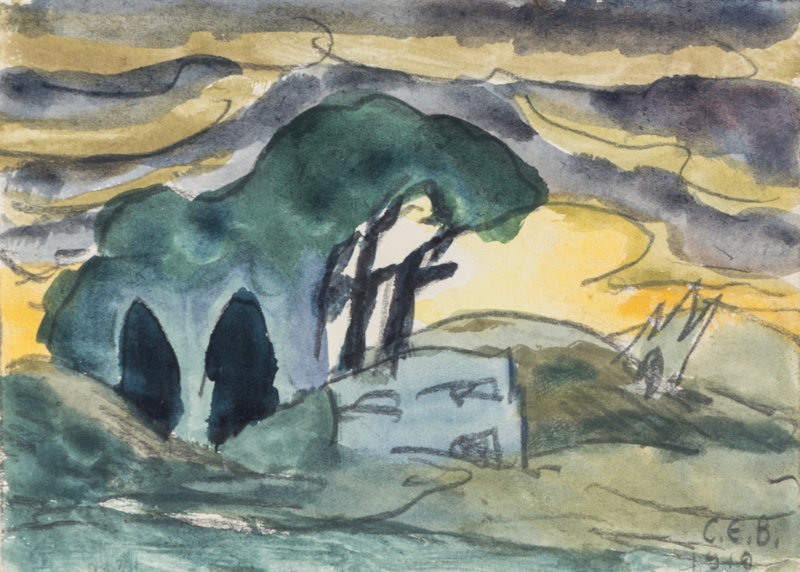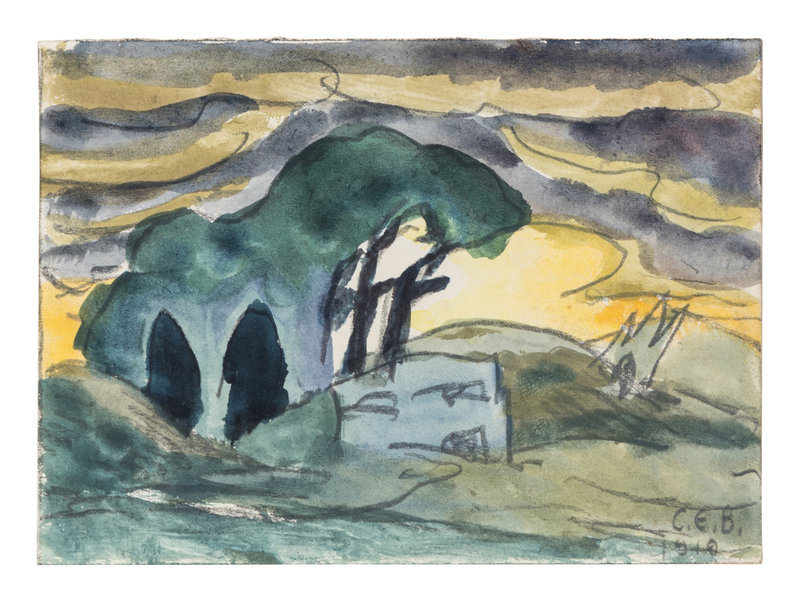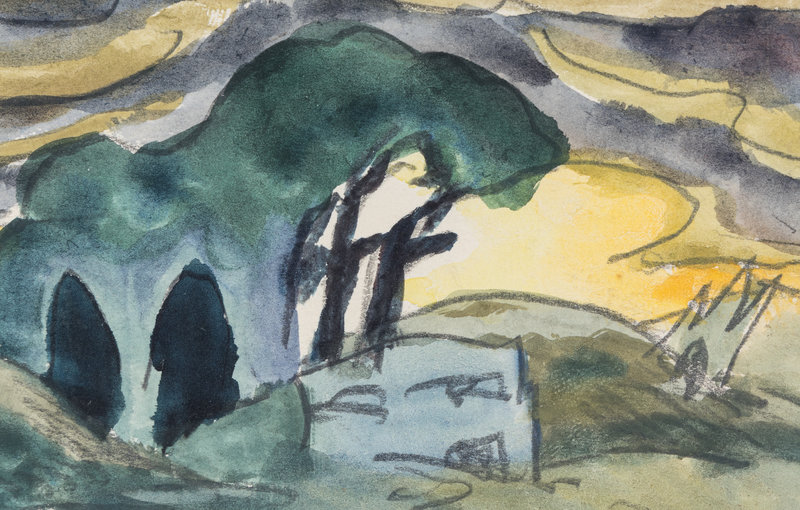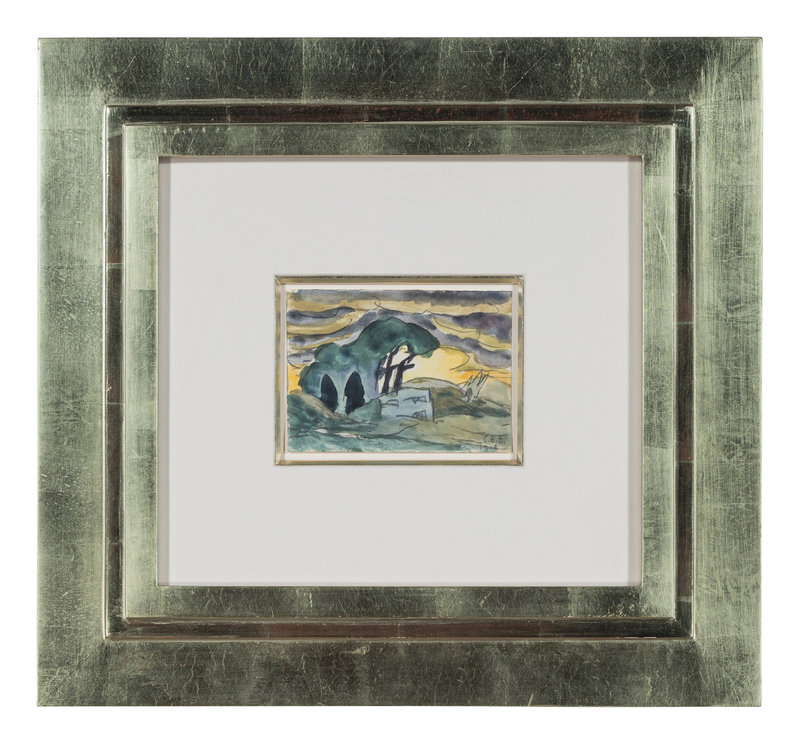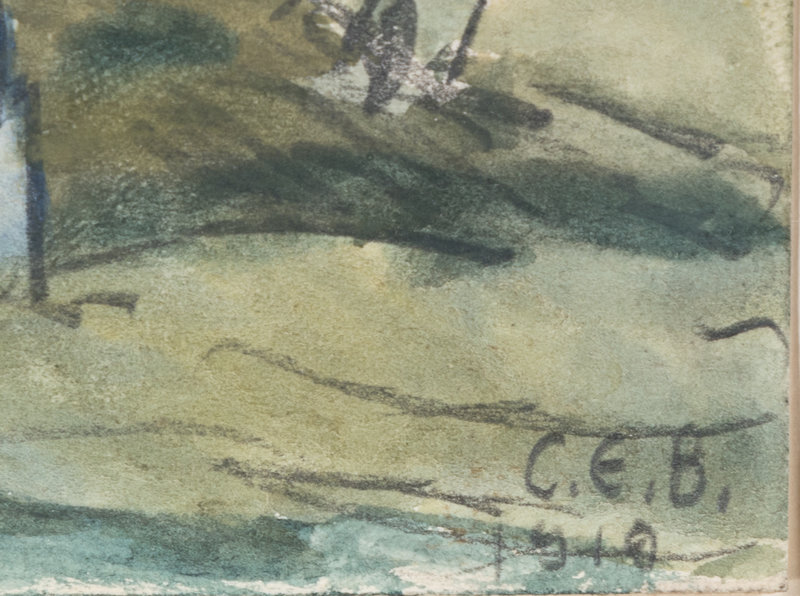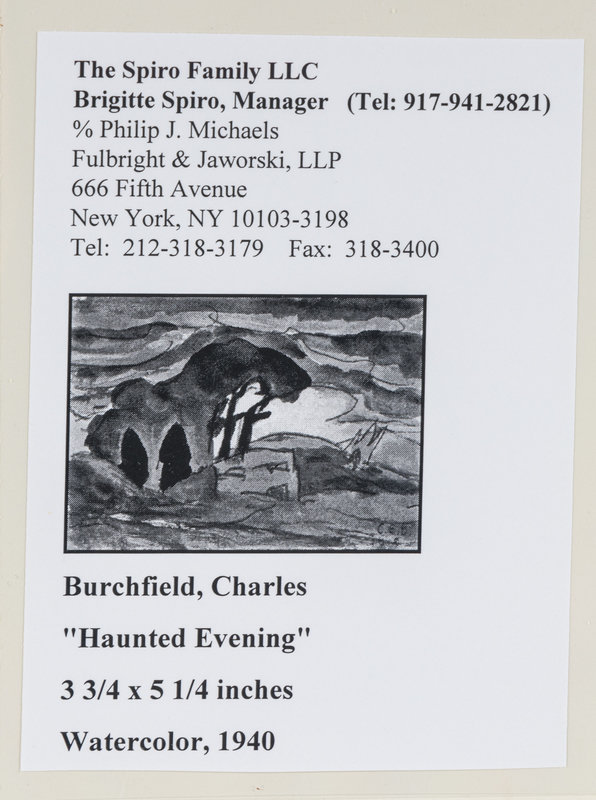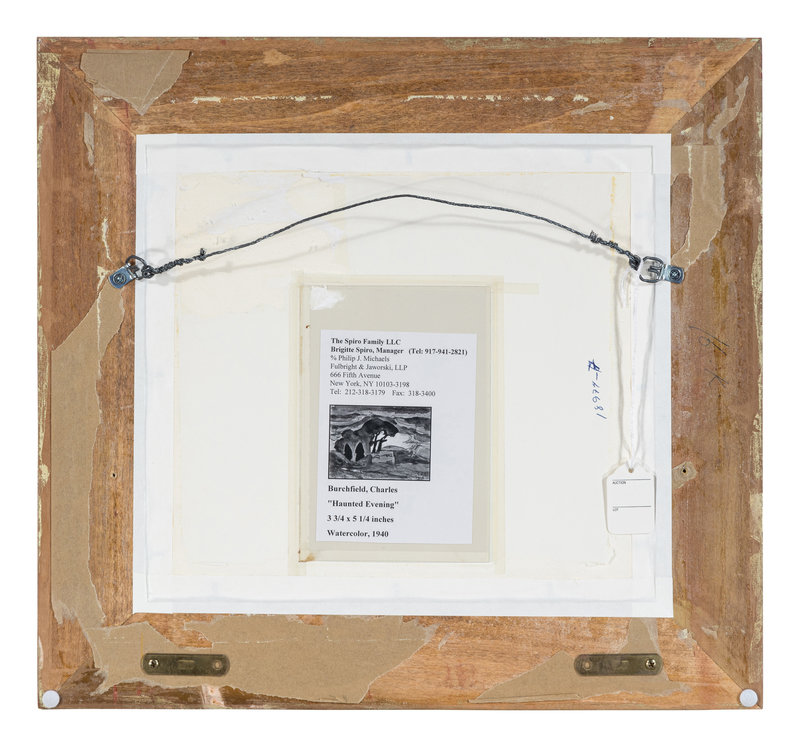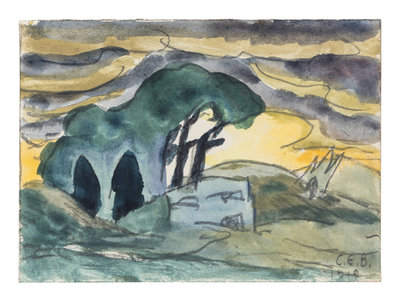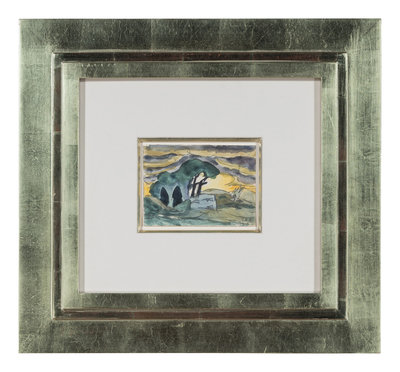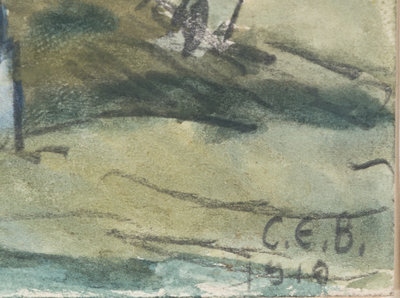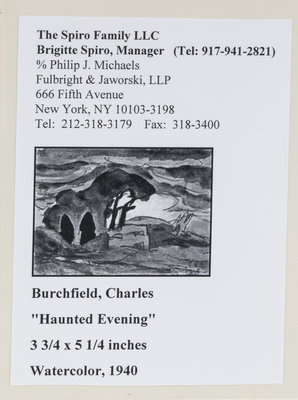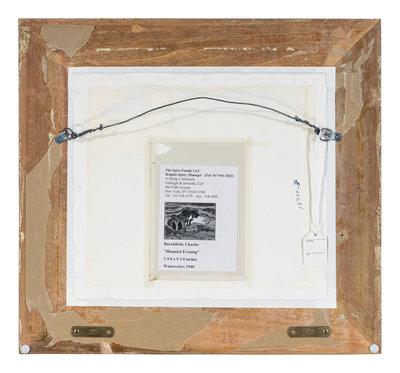Provenance:
The Artist
Mrs. Charles Burchfield, the Artist's wife, gift from the above, 1961
Frank K.M. Rehn Galleries, New York
Mr. & Mrs. Harry Spiro, New York
Debra Force Fine Art, New York
Private Collection, Ohio, acquired from the above, 2011
Exhibited:
Buffalo, New York, Burchfield Penney Art Center, Buffalo State College, Listening to the Trees: Burchfield Masterworks from the Spiro Collection, May 3 - November 2, 2003, p. 9; 20, illus.
New York, Debra Force Fine Art, Charles Burchfield: Seasons of Change: 1918-1965, Spring 2011
Lot note:
Raised in Salem, Ohio, Charles Ephraim Burchfield studied painting at the Cleveland School of Art with Henry G. Keller. After his graduation in 1916, the young artist very briefly attended New York’s National Academy of Design, deciding instead to spend the rest of the year sketching independently. He remained in New York long enough to meet Mary Mowbray-Clarke, who organized an exhibition of his watercolors at her Sunwise Turn Bookshop later that year, before he returned to Salem at the end of 1916. In July of 1918, Burchfield was inducted into the US Army, where his artistic talent was used in the camouflage section at Camp Jackson, South Carolina. During his time in the Army, the artist continued to sketch and paint, exploring the various visual motifs he had begun to formulate earlier in 1918 in his notebooks to represent fear, melancholy, nostalgia, meditation, and other abstract thoughts.
From this point until the 1960s, Burchfield’s work evolved in subject matter, palette, style, and psychological impact, with his oeuvre divided into three phases. The first, from 1915-1919, features landscapes based upon childhood memories and fantasies, some with a fauvist use of color and others more somber, reflective of his moods and personal feelings. Inspired by Sherwood Anderson’s Winesburg, Ohio, the second phase, from 1919-1943, exhibits a Social Realist or American Scene theme with depictions of small-town life and industrial scenes in and around Buffalo, New York, where he moved to in 1921. In need of a diversion from the aftermath of World War II, the third phase from 1943-1967 returns to the subject matter of his childhood. The resulting watercolors are much more expansive in large-scale formats and in portraying a more expressionistic intensity utilizing swirling strokes, heightened colors, and exaggerated forms.
The present watercolor dates from the first phase of the Burchfield’s work, when he attempted to codify emotions in pictographic form in his “Conventions for Abstract Thoughts.” Devised in 1917 and recorded in a slim notebook, these drawn motifs bear titles such as Fear, Morbidness, Dangerous Brooding, and Fear of Loneliness, and are based on observation and on the association of emotions with certain shapes. The skull-like eye sockets of the strange structure on the left, staring alarmingly over the hills, resemble the symbol Burchfield designated as Insanity or Imbecility. The foreboding atmosphere is further increased by the dark purple clouds striating the yellow sky, which echo the curve of the trees and hills of the landscape. With just a few pencil strokes and swaths of color, Burchfield produced an ominous visual tale, full of the threatening unknown.
